I built this toolbox of strategies and techniques that I turn to when feeling overwhelmed. These helped me manage the PTSD symptoms and helped to release the hold PTSD had on me. Taking care of yourself is key to recovery.
Post-traumatic stress disorder can be very debilitating and uncomfortable. There is a lot you can do on your own to mitigate your symptoms and move toward good mental health. It can’t hurt to give a few strategies a try.
Post-traumatic stress disorder is a serious matter, but that doesn’t mean there aren’t steps you can take yourself to speed your healing. I recommend you get professional help, while also taking responsibility and do what you can to help yourself.
I recommend you layer these self-care tips with the services of a good therapist.
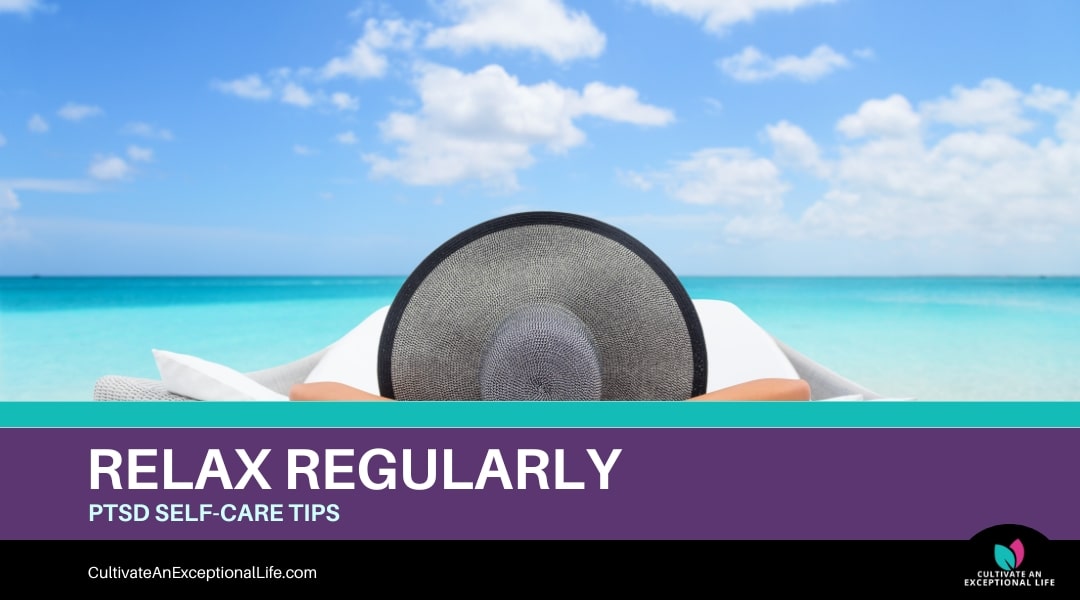
This PTSD self-care tip is probably pretty obvious. But is something that we often don’t take the time to do. And that is to relax. A relaxed body will help your mind to relax, too. There are many ways to do this, such as self-hypnosis, progressive muscle relaxation, sauna, hot tub, and guided meditation. Experiment and find the most effective and convenient way to relax your body each day.

Meditation has been shown to be a powerful tool for managing symptoms of PTSD (Post-Traumatic Stress Disorder). It teaches you how to focus, how your mind works and allows you to explore thoughts and ideas in a controlled and distraction-free environment. Meditation requires practice, but it’s a simple process. Everyone benefits from meditation.
Meditation can help individuals with PTSD to manage their symptoms by promoting relaxation, reducing anxiety, and improving overall emotional regulation. There are several types of meditation practices that may be helpful for individuals with PTSD, including mindfulness meditation, loving-kindness meditation, and yoga.
Mindfulness meditation involves focusing on the present moment, without judgment or distraction. This can help individuals with PTSD to stay grounded in the present, rather than being overwhelmed by traumatic memories or anxiety about the future.
Loving-kindness meditation involves directing positive feelings and well-wishes towards oneself and others. This can help individuals with PTSD to cultivate feelings of compassion and self-acceptance, which can counteract negative self-talk and self-blame that are common in PTSD.

Studies have shown that engaging in creative activities can help with PTSD. Using your brain to create something new is a powerful process that requires using your brain in unusual ways.
Doing something creative seems to be soothing to those with PTSD. Consider these ideas:
- Painting
- Drawing
- Sculpture
- Creative writing
- Poetry
These are just a few examples. You don’t have to be good at it either. Just have fun with it.

For some people, there’s nothing more relaxing than a dog or other type of animal. They don’t pity you, ask annoying questions, or judge you in any way. They just love you. Anyone, whether they have Post Traumatic Stress Disorder or not, could benefit from the right pet and may want to consider acquiring a service animal.
Consider finding an animal therapy program. For example, Hoofbeats for Healing is a non-profit organization that provides therapeutic horseback riding via Missouri Fox Trotter and Andalusian horses. Based on the theory of cross hemispheric integration, it has been shown to be effective in treating PTSD.
Or even consider going to a petting zoo. Interacting with animals can be quite healing.
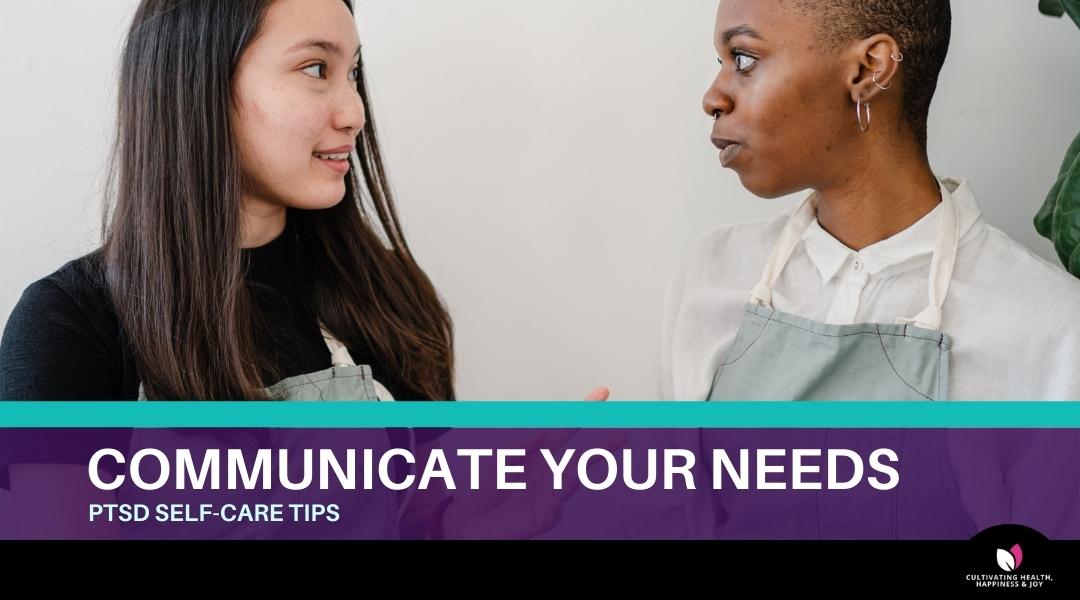
Post-traumatic stress disorder (PTSD) can have a profound impact on a person’s life, and communicating your needs is incredibly important for managing the symptoms and moving towards recovery. Here are some reasons why:
- Helps you get the support you need: If you are open about your needs, your loved ones and healthcare professionals can help you get the support you need. They can provide emotional support, help you access appropriate treatments, and provide a safe and understanding environment.
- Helps others understand your triggers: Communicating your needs can help others understand what triggers your PTSD symptoms. This can help them avoid actions or situations that could potentially trigger you and worsen your symptoms.
- Increases your sense of control: When you communicate your needs, you take control of your own recovery process. This can help you feel more in control of your life and improve your overall sense of well-being.
- Reduces feelings of isolation: PTSD can be isolating, and talking about your needs can help you feel less alone. It can help you connect with others who may be going through similar experiences and provide a sense of community and support.
- Improves relationships: Open communication is essential for building and maintaining healthy relationships. By communicating your needs, you can help others understand you better, which can lead to improved relationships and more fulfilling connections.
If you don’t like to be touched, let people know. That’s better than sitting home alone to ensure that no one touches you. If you want to avoid certain topics, let everyone around you know that. Letting others know your limits will reduce your anxiety as well as that of everyone else in your social circle.

Emotional Freedom Technique can be a very effective at reducing stress. It may seem very strange. But it works. I have seen many of my clients benefit greatly from it.
Emotional Freedom Technique (EFT), also known as tapping, is a type of therapy that involves tapping on specific points on the body while focusing on a specific issue or problem. EFT has been used as a complementary therapy for post-traumatic stress disorder (PTSD) and other mental health conditions.
There is some evidence to suggest that EFT may be helpful for reducing symptoms of PTSD. In one study, veterans who received EFT treatment showed significant reductions in PTSD symptoms, anxiety, and depression compared to a control group. Another study found that EFT was effective in reducing symptoms of PTSD in a group of women who had experienced domestic violence.
While EFT may be a useful tool for managing PTSD symptoms, it is important to note that it should not be used as a substitute for professional mental health treatment. People with PTSD should seek out qualified mental health professionals who are trained in evidence-based treatments for PTSD, such as cognitive-behavioral therapy or eye movement desensitization and reprocessing (EMDR).
If you are considering using EFT for PTSD, it is important to work with a trained practitioner who can guide you through the process and ensure that you are using the technique safely and effectively. It is also important to talk to your mental health provider before starting any new treatment, including EFT.

Cooking can be a helpful tool for individuals with PTSD to manage their symptoms and promote overall well-being. Here are some ways cooking can be beneficial:
- Sense of control: PTSD can cause feelings of helplessness and loss of control. Cooking can provide a sense of control over the cooking process and the outcome of the meal, which can help to alleviate these feelings.
- Mindfulness: As mentioned earlier, cooking mindfully can help to promote a sense of calm and reduce stress. Focusing on the present moment and engaging the senses can help to shift attention away from intrusive thoughts or memories.
- Connection to others: Cooking can be a social activity that promotes connection with others. Preparing meals for family and friends can provide a sense of purpose and fulfillment, and sharing a meal together can help to strengthen relationships and promote feelings of support and belonging.
- Nourishment: Eating healthy and balanced meals can help to support overall physical and mental health. Cooking meals at home allows for greater control over the ingredients and can ensure that the individual is getting the necessary nutrients for optimal health.
- Creativity: Cooking can be a creative outlet that allows for self-expression and exploration. Experimenting with new recipes and ingredients can provide a sense of accomplishment and foster a sense of curiosity and exploration.
Overall, cooking can be a helpful tool for individuals with PTSD to manage their symptoms and promote well-being. It can provide a sense of control, mindfulness, connection, nourishment, and creativity.
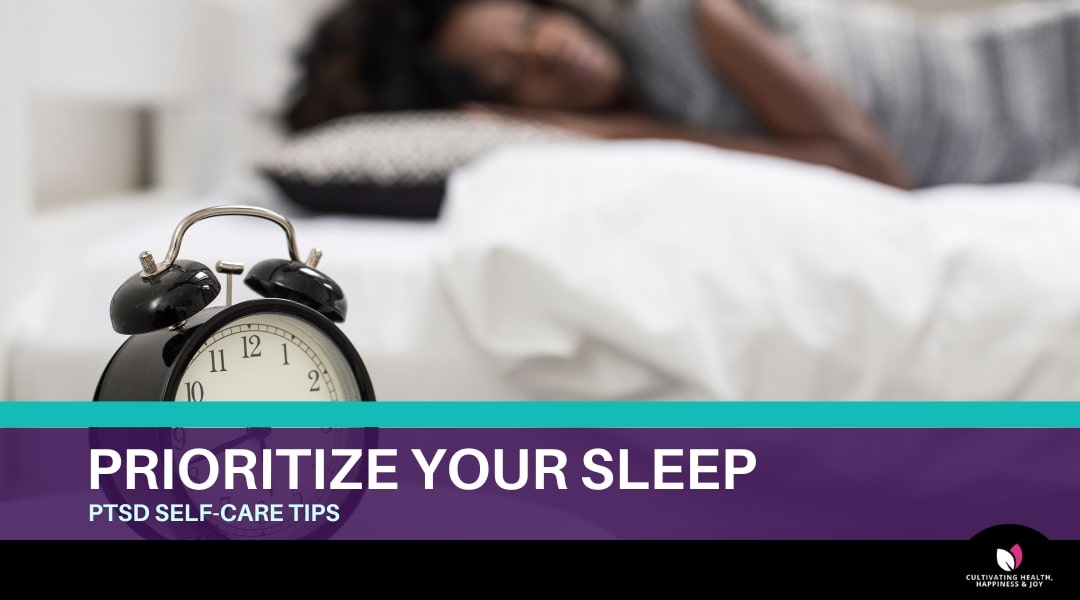
Sleep plays a critical role in regulating mood. Lack of sleep or poor quality sleep can exacerbate symptoms of anxiety and depression, which are common in individuals with PTSD.
Sleep can help reduce hyperarousal symptoms, such as an increased heart rate and hypervigilance, which can be triggered by traumatic memories.
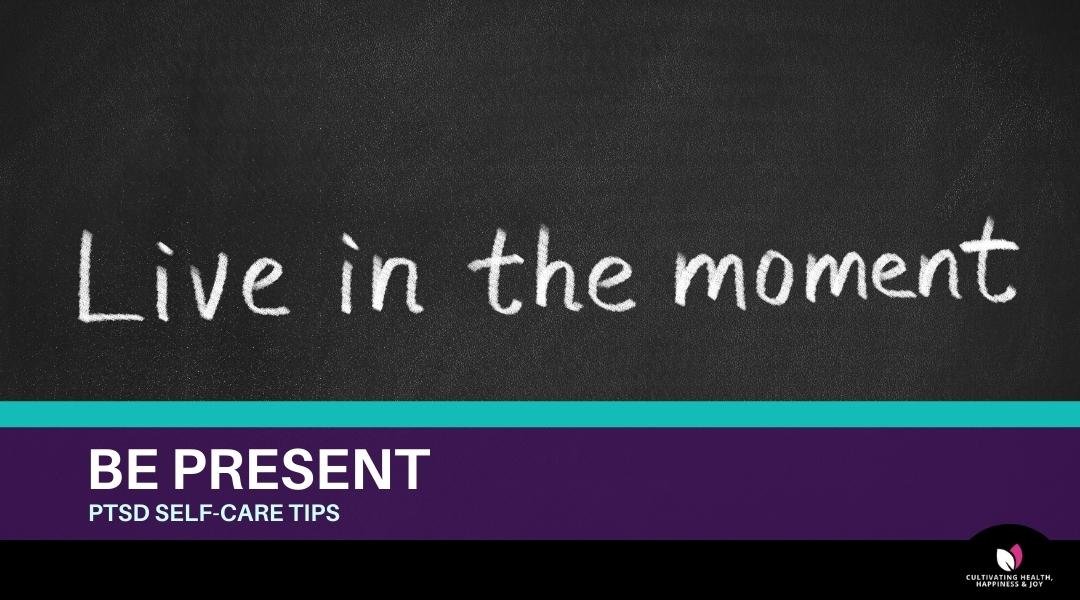
When dealing with a flashback or disturbing thoughts, stay present with your environment. Keep your mind in the present moment. When your attention wanders back to the trauma, bring your attention back to your environment. Focus on where you are. What can you see? Hear? Smell? Feel? Run your hands under water and pay attention to how it feels. Go outside and feel the heat from the sun, or the crisp cold air. Pay attention to what is going on around you right now that you may often ignore.
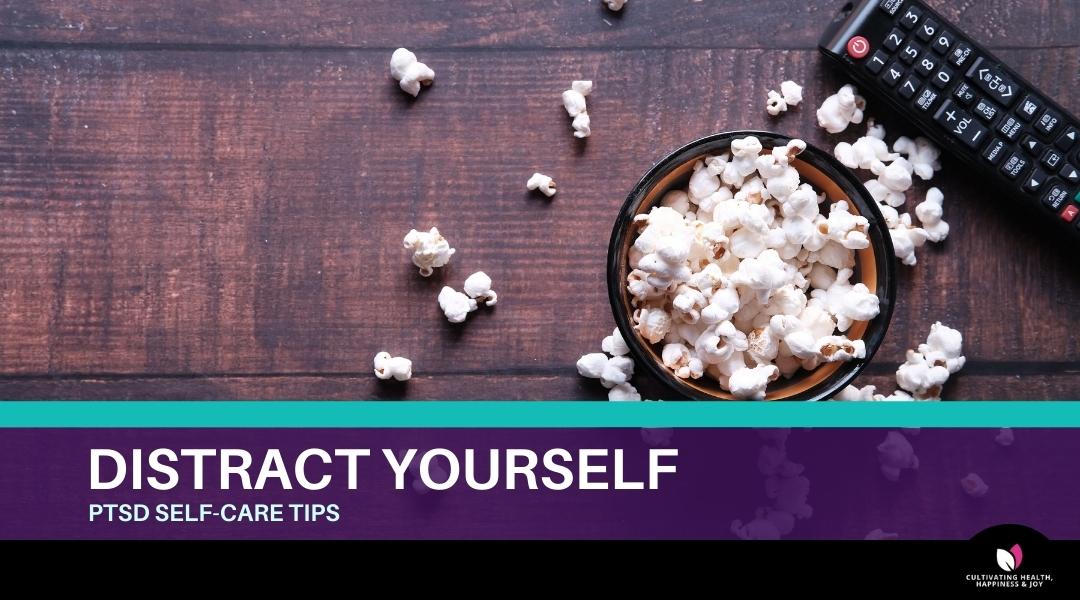
It is easy to get caught up in ruminating about what happened. Instead of sitting around thinking about the past, future, or other made-up scenarios, get busy and do something instead. Get out of the house. Mop the kitchen. Work in the garden. Watch a movie. The activity doesn’t matter, as long as you keep your mind active and avoid thinking excessively.
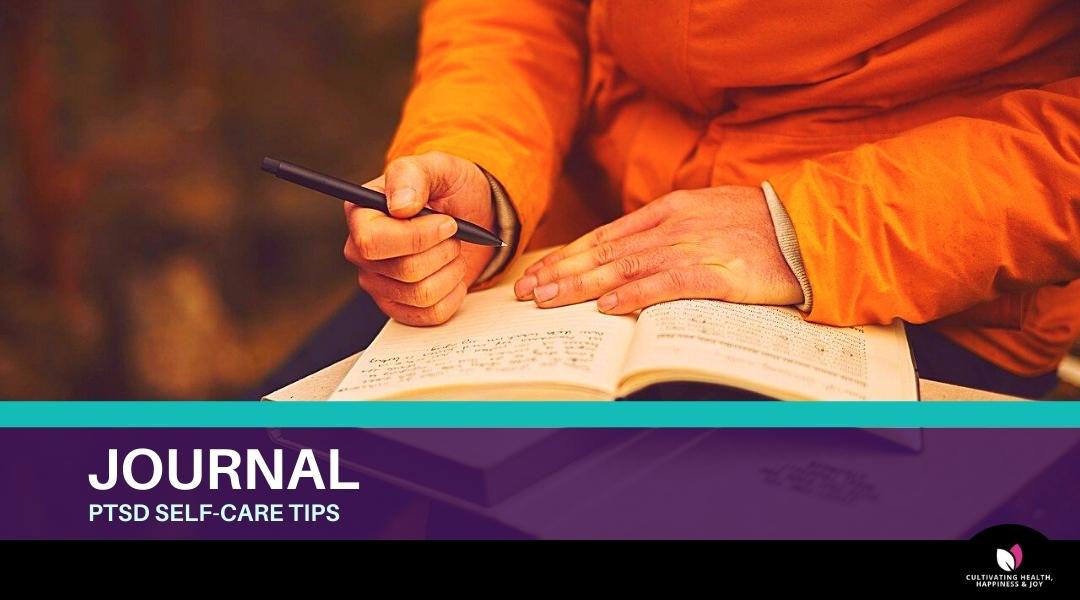
Journaling can be a powerful way of dealing with a traumatic event. Journalling can bring the trauma to the surface, so make sure you plan how you will deal with them when they do and implement them to help you manage the distress.
Just venting is not the goal here. Reserve venting for the Write and Burn and Talk to the Dragon activities below. The goal here is to explore how the trauma made you feel. Explore the thoughts you have about it. And explore how it is has impacted your life.
Think about the trauma and begin writing about it. Write about how you feel. And then explore if there are any silver linings.
Repeat the process until the feelings diminish and have little power over you.
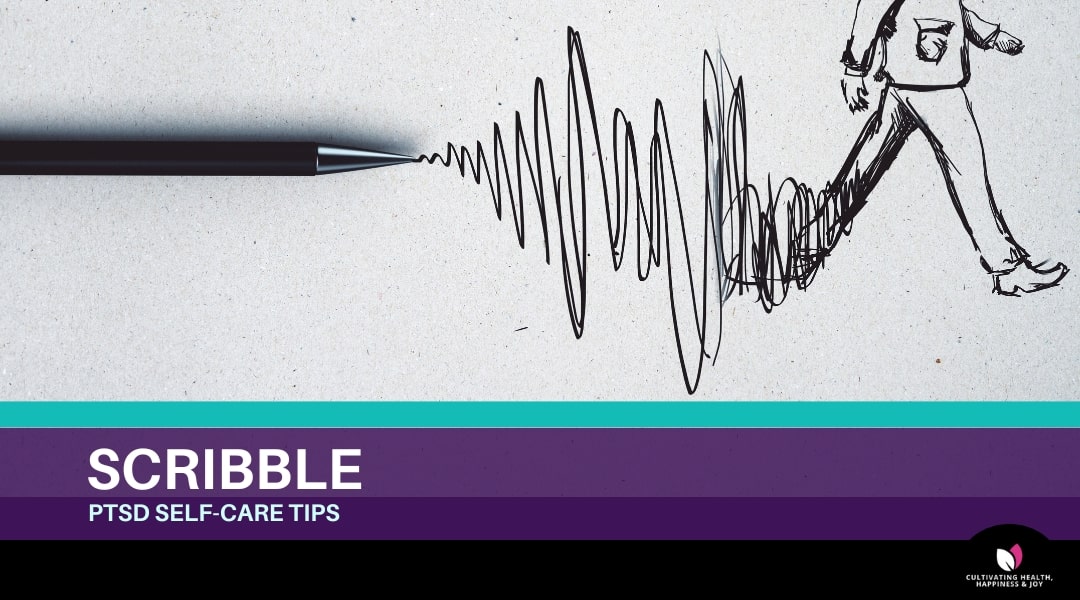
Sometimes journaling is too much. In that case get out a piece of paper and just scribble. Let those emotions come out on the paper. If you have a different colors of pens use what calls out to you. Different emotions could be represented by the colors you choose. I use this D3 liquid gel pen set.

Play is an effective pattern interrupt that helps take the focus off the trauma. Try something new that sounds fun or do something you know you’ll absolutely enjoy. Play a board game with friend. Hit the bowling alley. Play frisbee with the dog. Do something you enjoy. Or, try something new that sounds fun. It can be a great pattern interrupt and get you out of some negative thought patterns.
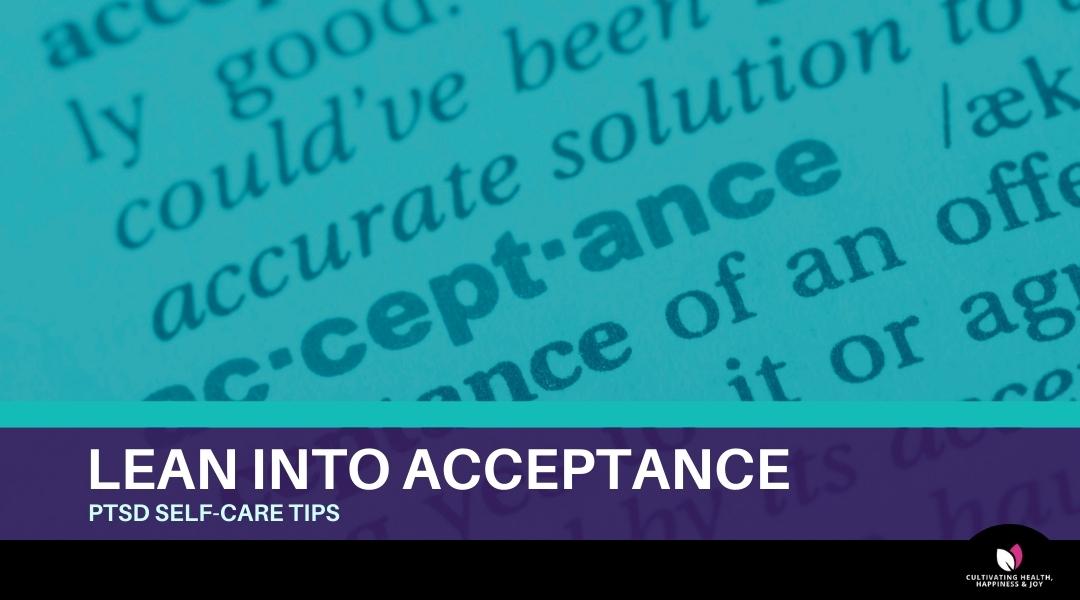
But, be cautious. Don’t let these thoughts compound and feed into self-destructive thoughts and patterns.
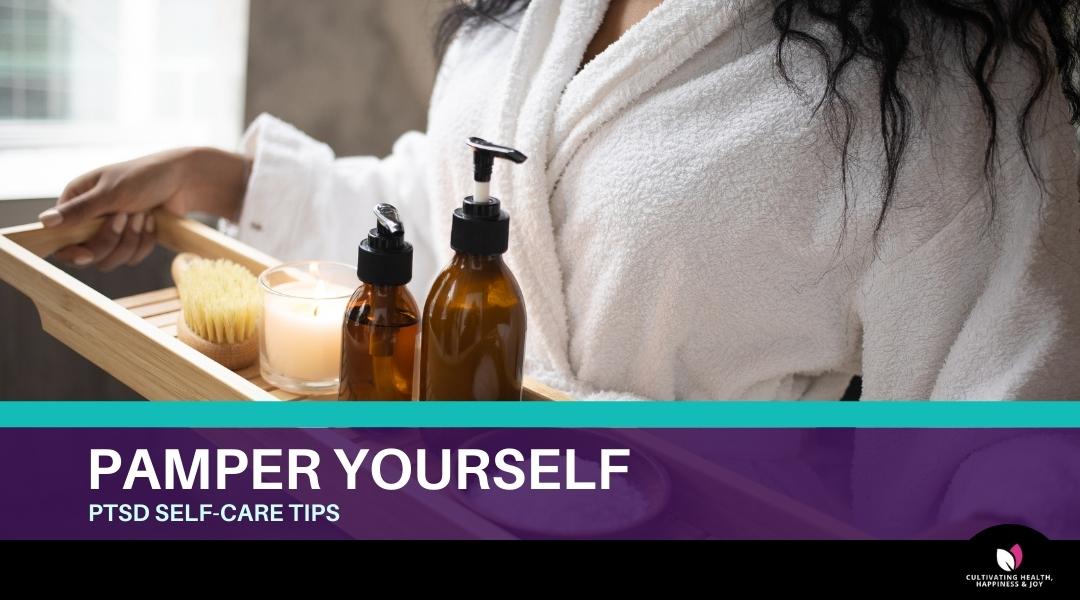
Soak in the tub with some essential oils and a little Epson salt. Do your nails. Give yourself a facial. Relaxing the body, can help relax the mind.
Out of all of the PTSD self-care tips on this page, I didn’t take the time to do this for so long. It also didn’t help that I didn’t have a bathtub. I did schedule week-long self-care retreats at the Cliff Lodge in the mountains above Salt Lake City. Those weeks were so restorative that they made me realize I need to do more pampering all year long.
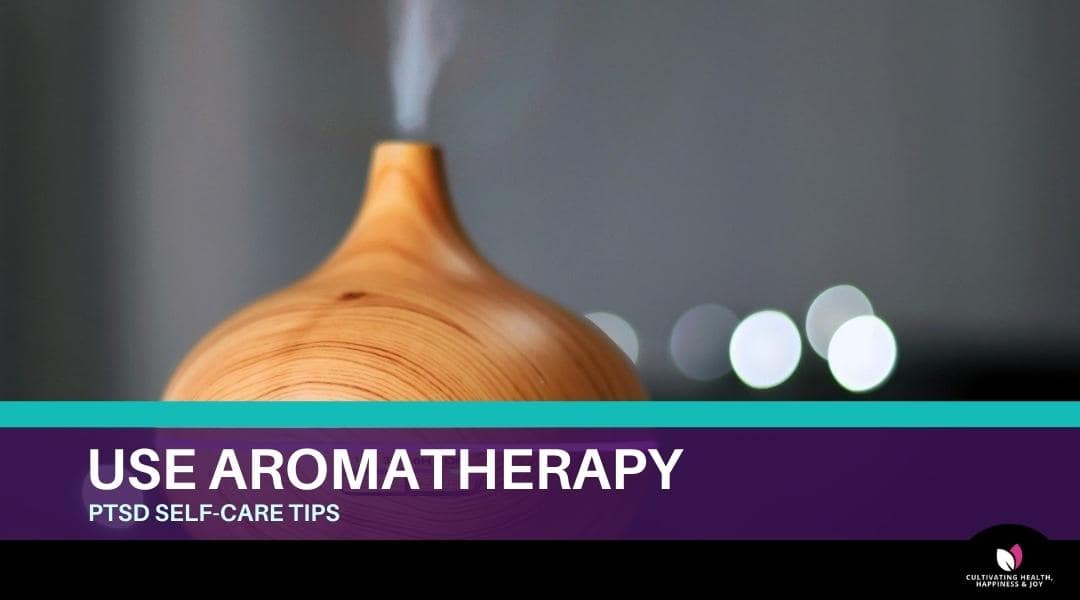
Add some essential oils to an aromatherapy diffuser. Out of all of the PTSD self-care tips on this page, I find this is the one I do pretty much every day because it is the easiest. I often use the oils in doTerra’s Emotional Aromatherapy System as the oils in it are designed to support anyone dealing with negative feelings. The six essential oil blends represent some common categories of emotional well-being,
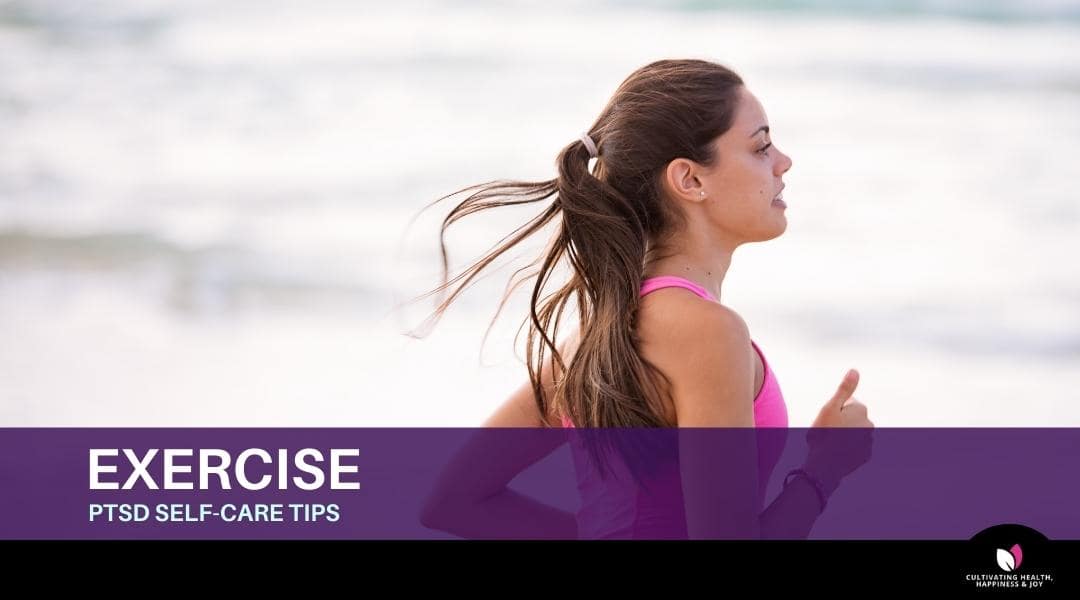
Exercise can be a helpful tool for individuals with PTSD to manage symptoms, as it has been shown to improve mood, reduce anxiety, and decrease hyperarousal. One study found those who engaged in strenuous exercise activity also reported better sleep quality, reduced substance abuse, less pain, and a reduction in overall PTSD symptoms than those who were less active. Strenuous was defined as vigorous running or cycling. However, the study pointed to beneficial effects of any type of aerobic activity, not just those we exercised vigorously.
Here are some benefits of exercise for individuals with PTSD:
- Reduces anxiety and depression: Exercise has been shown to reduce symptoms of anxiety and depression, which are common in individuals with PTSD.
Helps regulate emotions: Exercise can help regulate emotions by releasing endorphins and reducing cortisol levels, which can contribute to feelings of stress and anxiety. - Improves sleep: Exercise can improve sleep quality, which is often disrupted in individuals with PTSD.
- Enhances self-esteem: Exercise can improve self-esteem and self-confidence, which may be particularly helpful for individuals with PTSD who may struggle with feelings of shame or guilt.
- Provides a sense of control: Engaging in regular exercise can provide a sense of control over one’s physical health and well-being, which may be particularly important for individuals with PTSD who may feel powerless or helpless.
Some types of exercise that may be particularly helpful for individuals with PTSD include aerobic exercise, such as running or biking, which can help reduce hyperarousal symptoms, and mind-body practices, such as yoga or tai chi, which can help reduce anxiety and promote relaxation.

“Mindfulness is awareness that arises through paying attention, on purpose, in the present moment, non-judgementally,” says Kabat-Zinn. “And then I sometimes add, in the service of self-understanding and wisdom.”
This is what it looks like for me.
I stop and focus on my breath. I notice the way my chest rises and falls with each breath. If I am outside I will notice a breeze or the warmth of the sun. I will notice the sounds around me. The distance sound of cars. A dog barking in the instance. The goal is to just pay attention, without judgement. It helps bring us into the present moment, rather than sitting in the place where the trauma happened. Or living in fear of the future.

One study found the “frequency of continuing yoga practice significantly predicted greater decreases in PTSD symptom severity and depression symptom severity, as well as a greater likelihood of a loss of PTSD diagnosis.”
According to The Minded Institute, “A key challenge for someone suffering with post-traumatic stress disorder is the inability to regulate their physiological survival response. As an instinctive and unconscious reaction, a person can rationally know they aren’t in danger while still experiencing hypervigilance and even panic. Achieving stabilization of the autonomic nervous system (ANS) through yoga can help people engage with counselling and psychotherapy, allowing them to begin to process their trauma.”
Yoga Is Easy to Do At Home
Plus yoga can be practiced easily at home, as there is no need for highly specialized treatment equipment, There are some great yoga videos available on YouTube. This video is a 20 minute video great for getting started. Adriene also created a video for use after a disaster. I believe, PTSD qualifies as a disaster.
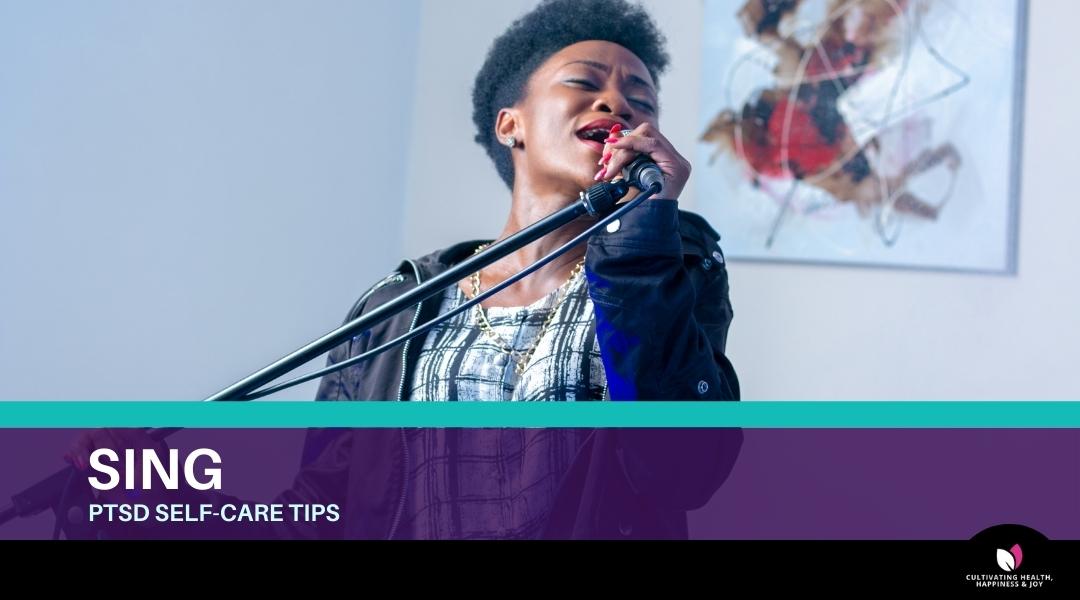
I don’t like to sing. At least not in public. But I found it can be very therapeutic to sing in the car. This is especially true if I am having a hard time talking about something or when I find vocalizing the trauma difficult.
When that happens, I’ll go for a drive, crank up the radio, turn it to an oldie rock station and sing.
I also find it beneficial in helping to uplift me if I am in a bad mood.
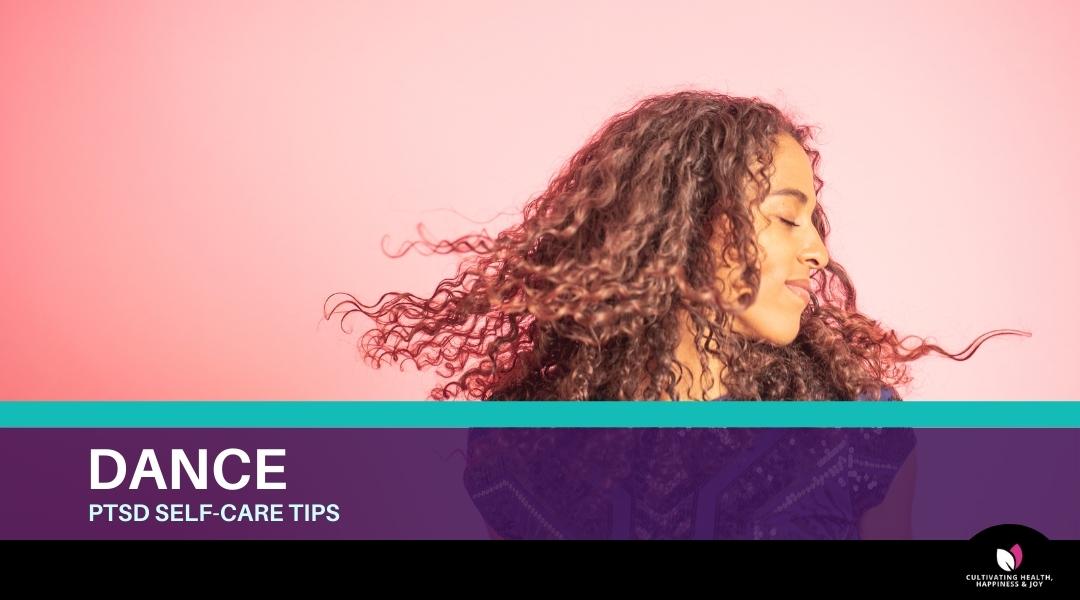
Dancing can be a helpful tool for individuals with PTSD to manage symptoms, as it provides a creative outlet, promotes physical activity, and can help regulate emotions.
Here are some benefits of dancing for individuals with PTSD:
- Creative expression: Dancing provides a creative outlet for individuals with PTSD to express their emotions and experiences in a nonverbal way.
- Promotes physical activity: Dancing is a form of physical activity, which has been shown to reduce symptoms of PTSD, such as anxiety and depression.
- Mind-body connection: Dancing can help individuals with PTSD connect with their bodies and promote a sense of control over their physical well-being.
- Social support: Dancing can be a social activity, which can help reduce feelings of isolation and loneliness that are common in individuals with PTSD.
- Reduces hyperarousal: Dancing can help reduce hyperarousal symptoms, such as an increased heart rate and hypervigilance, by promoting relaxation and regulating the nervous system.
There are also specific types of dance therapy that have been developed to help individuals with PTSD, such as creative movement therapy and dance/movement therapy. These therapies involve using dance and movement to explore emotions, promote self-awareness, and regulate the nervous system.

I have found that some essential oils helps our body find that natural resting state and help us develop a sense of calm. . Many essential oils are naturally calming to our bodies and our nervous system. and help us to achieve an overall sense of well being
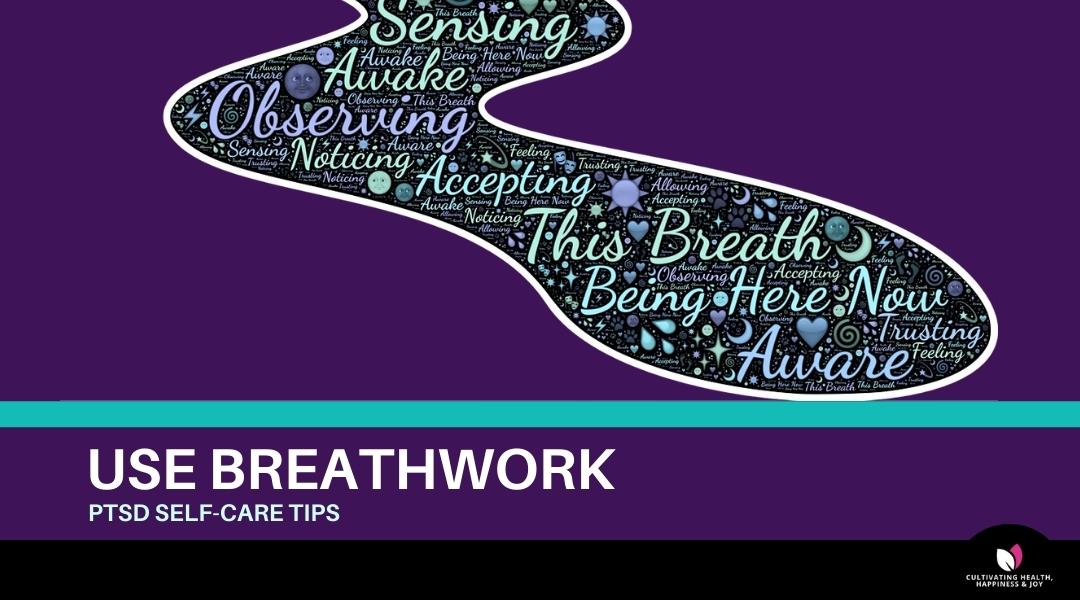
Breathwork is breathing techniques design to facilitate relaxation and can be an effective way to unblock trauma.
There are several different type of breathwork techniques. Some may be more effective for you vs others.
Rhythmic breathing is the type I use most often.
This TED talk explores how the breathe can be used to heal.
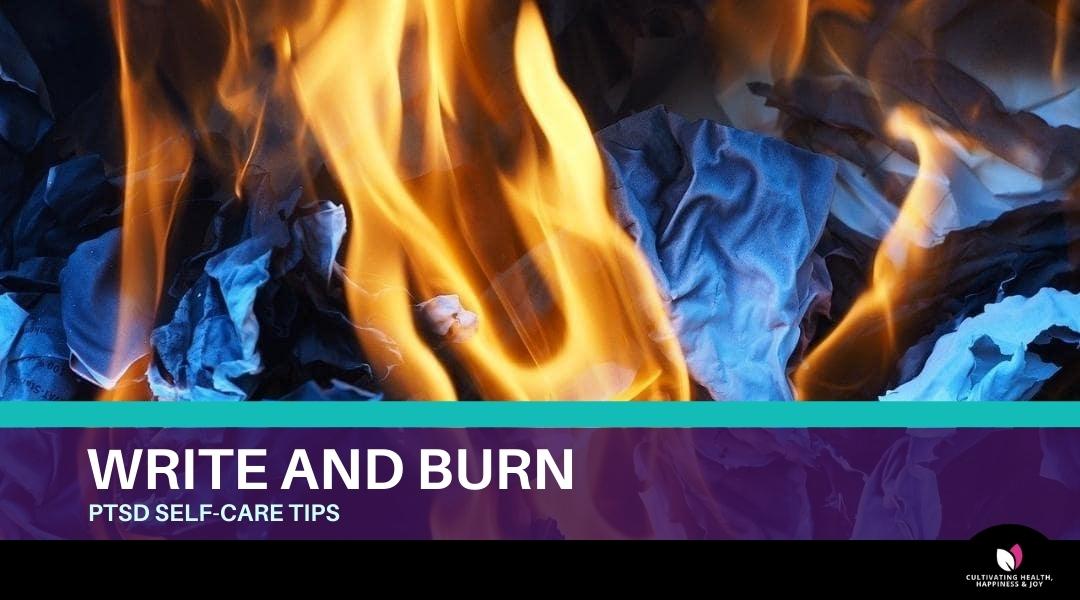
This is one of my favorites. It is simple and requires very little equipment or other people.
The process:
- Write down your negative feelings, thoughts, reactions, etc. to the trauma (or anything else that is bothering you).
- Write until nothing more is coming up.
- Take the list outside.
- Pace it in a coffee can or some other type of fire proof container.
- Light the list on fire.
- Picture those negative thoughts leaving your body as the smoke rises.

I call this process “Talk to the Dragon” because we are Go out to your car. Pretend that the person who may be the source of the trauma is sitting in the seat next to you. Tell them you want them to just listen and then proceed to tell them how you feel. Go ahead and say it out loud. Get those emotions out in the open.
Do the same thing with anyone else whose actions or lack of action may have contributed to the trauma. Perhaps there is some anger towards a parent who was working so much that they failed to notice what was really going on. You get the idea.
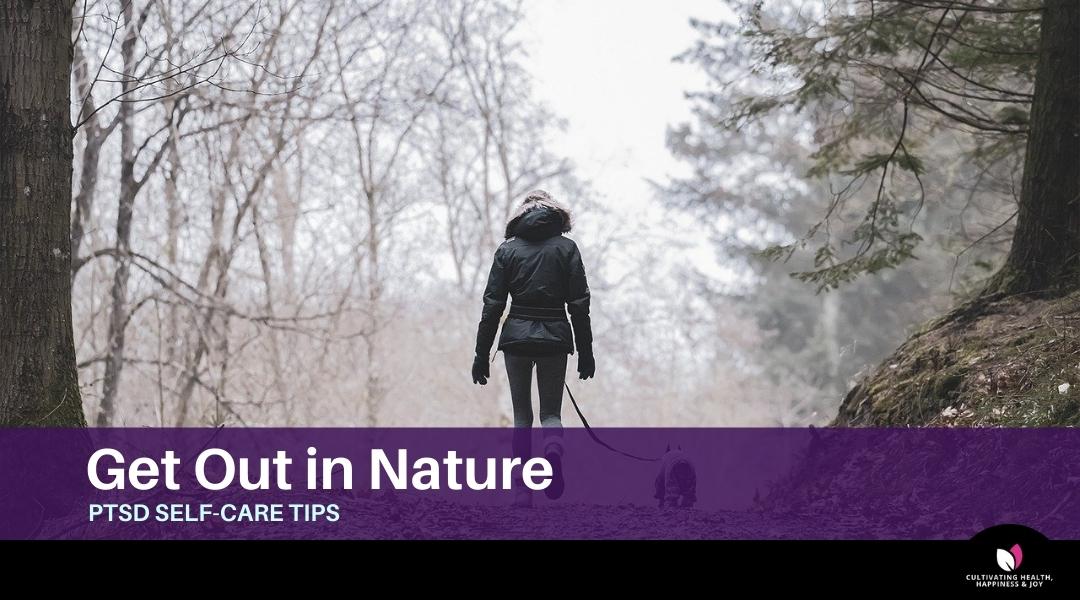
Go out to your car. Pretend that the person who may be the source of the trauma is sitting in the seat next to you. Tell them you want them to just listen and then proceed to tell them how you feel. Go ahead and say it out loud. Get those emotions out in the open.
Do the same thing with anyone else whose actions or lack of action may have contributed to the trauma. Perhaps there is some anger towards a parent who was working so much that they failed to notice what was really going on. You get the idea.

As a child, one of my favorite things to see (and hear) on our travel adventures was the Native American drummers so when I was invited to participate in a drum circle I knew I would love it. But it was better than I thought it would be. In fact, the first time I participated in a drum circle I was moved to tears.
The sound vibrations pulsed through my body, doing more than I thought would have even been possible. There is plenty of research that shows it can be effective in assisting people with PTSD, depression, anxiety, and even chronic inflammation.
Researchers found that participants who participated in a drum circle for 10 weeks had their anxiety and depression decrease. The participant’s depression scores decreased by 24% by week 6 and 38% by week 10! That is pretty significant.
Participants also saw a significant increase in social resilience. The control group, which did not participate in the drum circles did not see a drop in depression or anxiety. Source2
See if you can find a drum circle in your area and participate in one. I hope you enjoy it as much as I do.
One word of warning: I have heard that some drum circles have quite a bit of drug use going on. I participate in a family-friendly one that allows children.
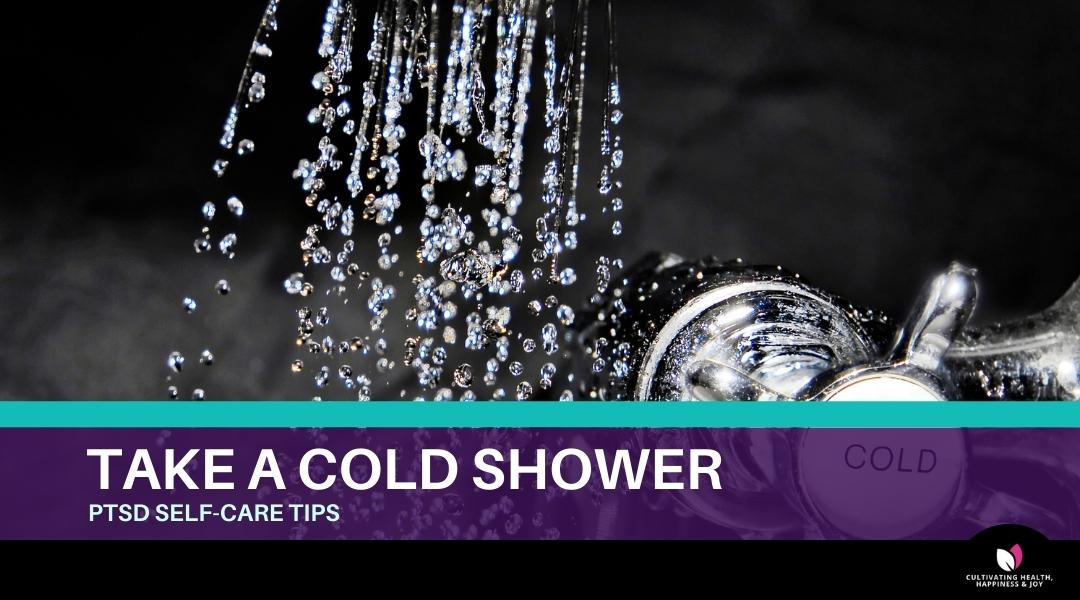
There is limited research on the specific benefits of cold showers for PTSD. However, there is some evidence that cold exposure therapy, which includes cold showers, may be a helpful tool for managing symptoms of PTSD. So when you take a cold shower, the fight or flight system breaks down, as the adrenaline will shoot up and drop back down. And all the stress hormones go down with the adrenaline.
Here are some potential benefits of cold showers for individuals with PTSD:
- Reduces hyperarousal: Exposure to cold temperatures can help regulate the nervous system and reduce hyperarousal symptoms, such as an increased heart rate and hypervigilance, which can be triggered by traumatic memories.
- Improves sleep: Exposure to cold temperatures has been shown to improve sleep quality, which is often disrupted in individuals with PTSD.
- Enhances mood: Exposure to cold temperatures has been shown to increase the production of endorphins, which can improve mood and reduce symptoms of depression and anxiety.
- Boosts immune system: Exposure to cold temperatures has been shown to increase the production of white blood cells, which can help boost the immune system.
- Increases resilience: Cold exposure therapy can help increase resilience to stress and promote a sense of control over the body and mind, which may be particularly helpful for individuals with PTSD who may feel powerless or helpless.
It is important to note that cold exposure therapy should be used with caution and under the guidance of a healthcare provider, as it may not be appropriate for individuals with certain medical conditions or sensitivities to cold temperatures. It is also important to note that cold showers should not be used as a replacement for evidence-based treatments for PTSD, such as therapy and medication.

The point here is to be intentional about what you listen to. Some days it may be helpful to listed to songs about the trauma you went through. Other days that same song can bring up more emotions that one can deal with at the time. It could be that a relaxing play list is needed.
This can begin healing the damage that trauma has caused so many of these children.
Researchers found music and emotions are processed in the same neural networks of the brain. (Moore and Hanson-Abromeit).
One of the things that music therapy seeks to do is to “rewire the brain” (Foran 4). But music also has been shown to have an effect on a person’s brain chemistry. And that exposure to music can help undo some of the damage that trauma has on children’s brains.
Even the Bible highlights it, with stories like David playing the harp to soothe the soul of King Saul, as well as the presence of many Psalms of lament within the scriptures. More recently, music therapy has been used successfully with both war veterans and abuse victims with PTSD (Smith and Nobel 1).

There have been a few times in my life when PTSD flared up multiple times a day. That is when I knew it was time to work with a therapist that was experienced in dealing with PTSD. It’s also important to find a therapist that you feel comfortable with. Some therapists might have the right skills and experience but be a poor fit.
● It might require interviewing a few therapists to find the right one for you. Many mental health professionals provide free consultations. Take advantage of them.
Post-traumatic stress disorder is a serious matter, but that doesn’t mean there aren’t steps you can take outside of a clinical setting to speed your healing. Meditation, taking part in creative activities, staying busy, and setting limits are just a few of the ways you can make life easier for yourself.
Get professional help, if necessary, but take responsibility to do what you can to help yourself.
Liked this post? Pin your favorite image for later and share the love!
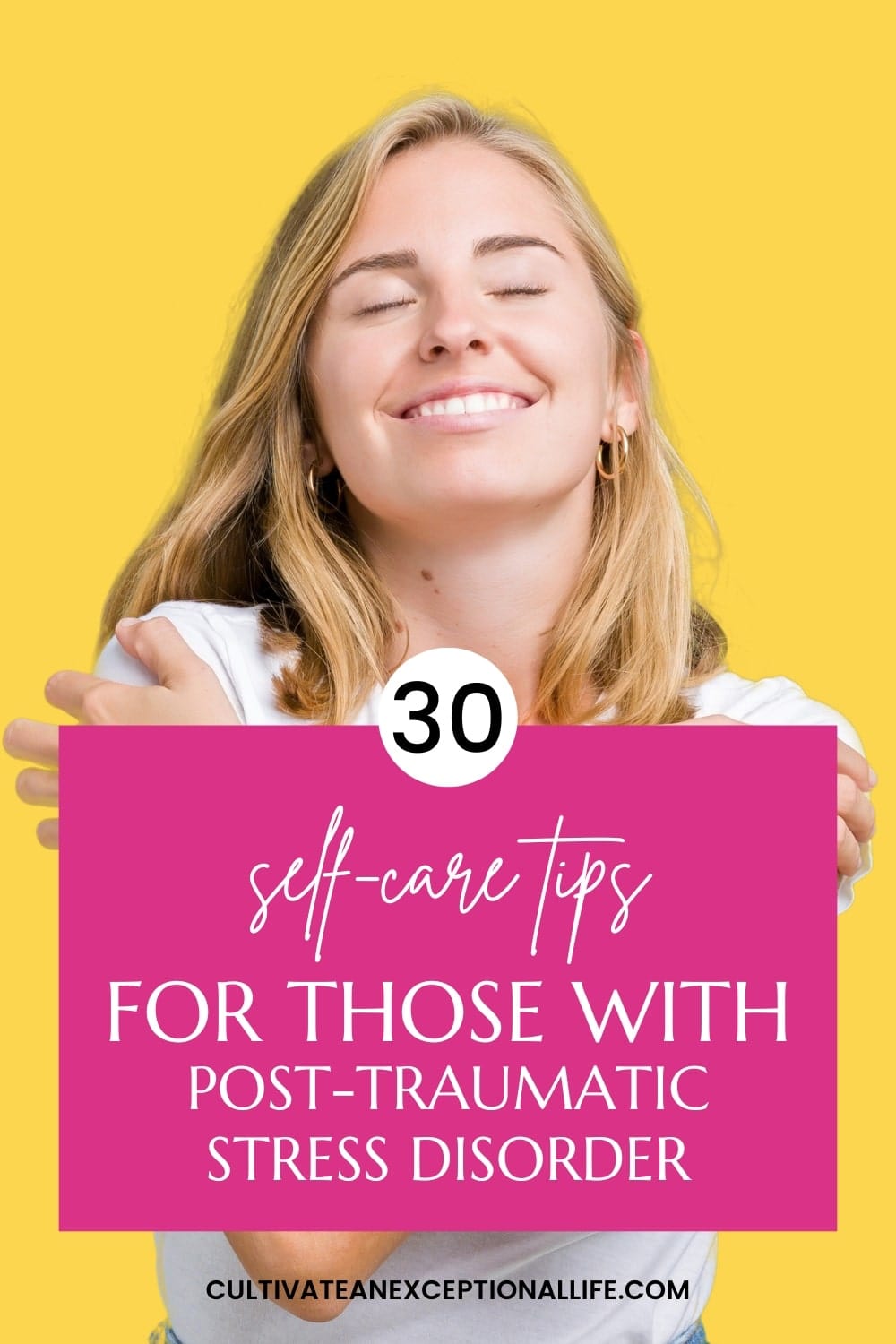


About the Author
Leisa Watkins
Leisa Watkins is the founder of Cultivate An Exceptional Life. She believes life is meant to be enjoyed and experienced in abundance. She is on a mission to help people break through barriers and avoid roadblocks in life while creating a life they love. She also shares tips on getting more out of life, despite it's challenges on our Instagram channel. Please follow us.
References
- Department of Veterans Affairs and Department of Defense. (2017). VA/DOD Clinical Practice Guideline for the Management of Posttraumatic Stress Disorder and Acute Stress Disorder. Retrieved December 27, 2020,. [Veterans Administration]
- Fancourt D., Perkins R., Ascenso S., Carvalho L.A., Steptoe A., Williamon A. Effects of group drumming interventions on anxiety, depression, social resilience and inflammatory immune response among mental health service users. PLoS One. 2016 Mar 1;11(3) Google Scholar
- Foran, Lucille M. “Listening to Music: Helping Children Regulate Their Emotions and Improve Learning in the Classroom.” Educational Horizons (2009): 51-58. [Institute of Educational Sciences].
- Moore, Kimberly Sena, and Deanna Hanson-Ambromeit. “Theory-guided Therapeutic Function of Music to Facilitate Emotion Regulation Development in Preschool-aged Children.” Frontiers. Frontiers in Human Neuroscience, n.d. Web. 14 Oct. 2015. [Web]
- Barrett, Margaret S. “Inventing Songs, Inventing Worlds: The ‘genesis’ of Creative Thought and Activity in Young Children’s Lives.” International Journal of Early Years Education 14.3 (2006): 201-20. [Web]
- Deanna Hanson-Ambromeit. “Theory-guided Therapeutic Function of Music to Facilitate Emotion Regulation Development in Preschool-aged Children.” Frontiers. Frontiers in Human Neuroscience, n.d. Web. 14 Oct. 2015. <http://journal.frontiersin.org/article/10.3389/fnhum.2015.00572/full?>Smith, Joshua, PhD, and Jeremy Nobel, MD. “Creative, Artistic, and Expressive Therapies for PTSD.” (n.d.): n. pag. Foundation for Arts & Healing. Web. <http://www.marketingnavigators.com/FAH2/wp-content/uploads/2015/12/PTSD-White_Paper_Smyth_Nobel.pdf>.
- Kinship United. .Where Words Fail, Music Speaks. Retrieved March 13, 2022. <[Web]
- Alison Rhodes, Joseph Spinazzola, and Bessel van der Kolk.The Journal of Alternative and Complementary Medicine.Mar 2016.189-196.http://doi.org/10.1089/acm.2014.0407
- Church, D., Hawk, C., Brooks, A. J., Toukolehto, O., Wren, M., & Dinter, I. (2013). Psychological trauma symptom improvement in veterans using EFT (Emotional Freedom Techniques): A randomized controlled trial. Journal of Nervous and Mental Disease, 201(2), 153-160. doi: 10.1097/NMD.0b013e31827f6351
- Karatzias, T., Power, K., Brown, K., McGoldrick, T., Begum, M., Young, J., & Adams, S. (2011). A controlled comparison of the effectiveness and efficiency of two psychological therapies for posttraumatic stress disorder: Eye movement desensitization and reprocessing vs. emotional freedom techniques. Journal of Nervous and Mental Disease, 199(6), 372-378. doi: 10.1097/NMD.0b013e31821cd262
- Clond, M. (2016). Emotional Freedom Techniques for anxiety: A systematic review with meta-analysis. Journal of Nervous and Mental Disease, 204(5), 388-395. doi: 10.1097/NMD.0000000000000483
- Geronilla, L., & Tuason, M. T. (2016). Effects of emotional freedom techniques on posttraumatic stress disorder in veterans: A randomized controlled trial. Psychological Trauma: Theory, Research, Practice, and Policy, 8(2), 214-222. doi: 10.1037/tra0000103
- Polusny, M. A., Erbes, C. R., Thuras, P., Moran, A., Lamberty, G. J., Collins, R. C., … & Lim, K. O. (2015). Mindfulness-based stress reduction for posttraumatic stress disorder among veterans: A randomized clinical trial. JAMA, 314(5), 456-465.
- Niles, B. L., Klunk-Gillis, J., Ryngala, D. J., Silberbogen, A. K., Paysnick, A., & Wolf, E. J. (2012). Comparing mindfulness and psychoeducation treatments for combat-related PTSD using a telehealth approach. Psychological Trauma: Theory, Research, Practice, and Policy, 4(5), 538-547.
- van der Kolk, B. A., Stone, L., West, J., Rhodes, A., Emerson, D., Suvak, M., & Spinazzola, J. (2014). Yoga as an adjunctive treatment for posttraumatic stress disorder: A randomized controlled trial. Journal of Clinical Psychiatry, 75(6), e559-e565.
- Kearney, D. J., McDermott, K., Malte, C., Martinez, M., & Simpson, T. L. (2013). Effects of participation in a mindfulness program for veterans with posttraumatic stress disorder: A randomized controlled pilot study. Journal of Clinical Psychology, 69(1), 14-27.





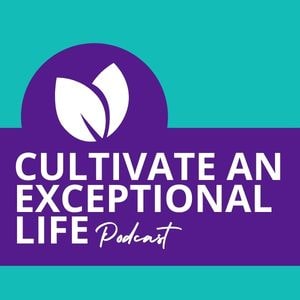



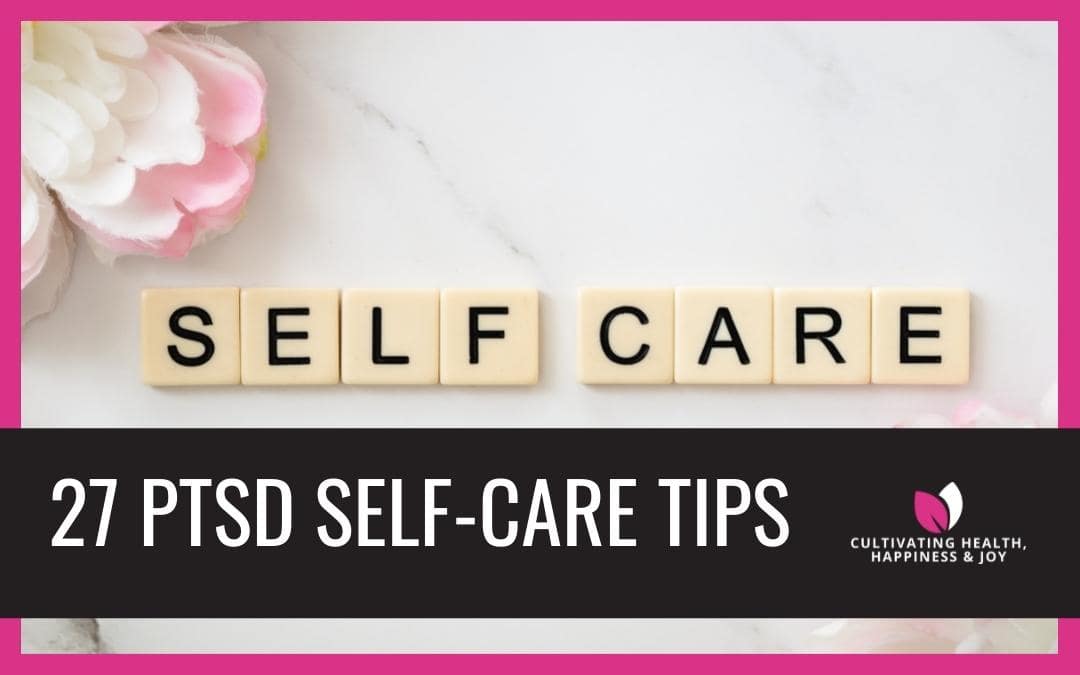





0 Comments